Images of cecal volvulus from a strangulating fallopian tube: a case report
- PMID: 22383914
- PMCID: PMC3279488
- DOI: 10.4021/jocmr661w
Images of cecal volvulus from a strangulating fallopian tube: a case report
Abstract
An unusual case of cecal volvulus arising from a strangulating fallopian tube is presented. The etiology, diagnosis, and management guidelines of this infrequent cause of large bowel obstruction are reviewed. Computed tomography images are included, which demonstrate key features that are pathognomonic for this condition. To our knowledge, this is the first report of gynecologic adnexa giving rise to cecal volvulus.
Keywords: Cecal volvulus; Gynecologic and general surgery; Intestinal obstruction.
Figures

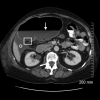
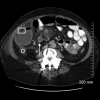
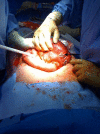
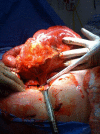
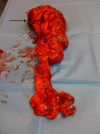
References
-
- Habre J, Sautot-Vial N, Marcotte C, Benchimol D. Caecal volvulus. Am J Surg. 2008;196(5):e48–49. - PubMed
-
- Mathew HM, Chin K. Caecal volvulus--an unusual cause of post-operative pain following gynaecological surgery. J Obstet Gynaecol. 2003;23(6):685–686. - PubMed
-
- Moore CJ, Corl FM, Fishman EK. CT of cecal volvulus: unraveling the image. AJR Am J Roentgenol. 2001;177(1):95–98. - PubMed
-
- Schaeffer AJ, Hines JR. Cecal volvulus after obstetric and gynecologic procedures. Report of 3 patients. Obstet Gynecol. 1971;37(2):255–259. - PubMed
LinkOut - more resources
Full Text Sources
